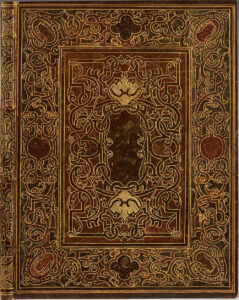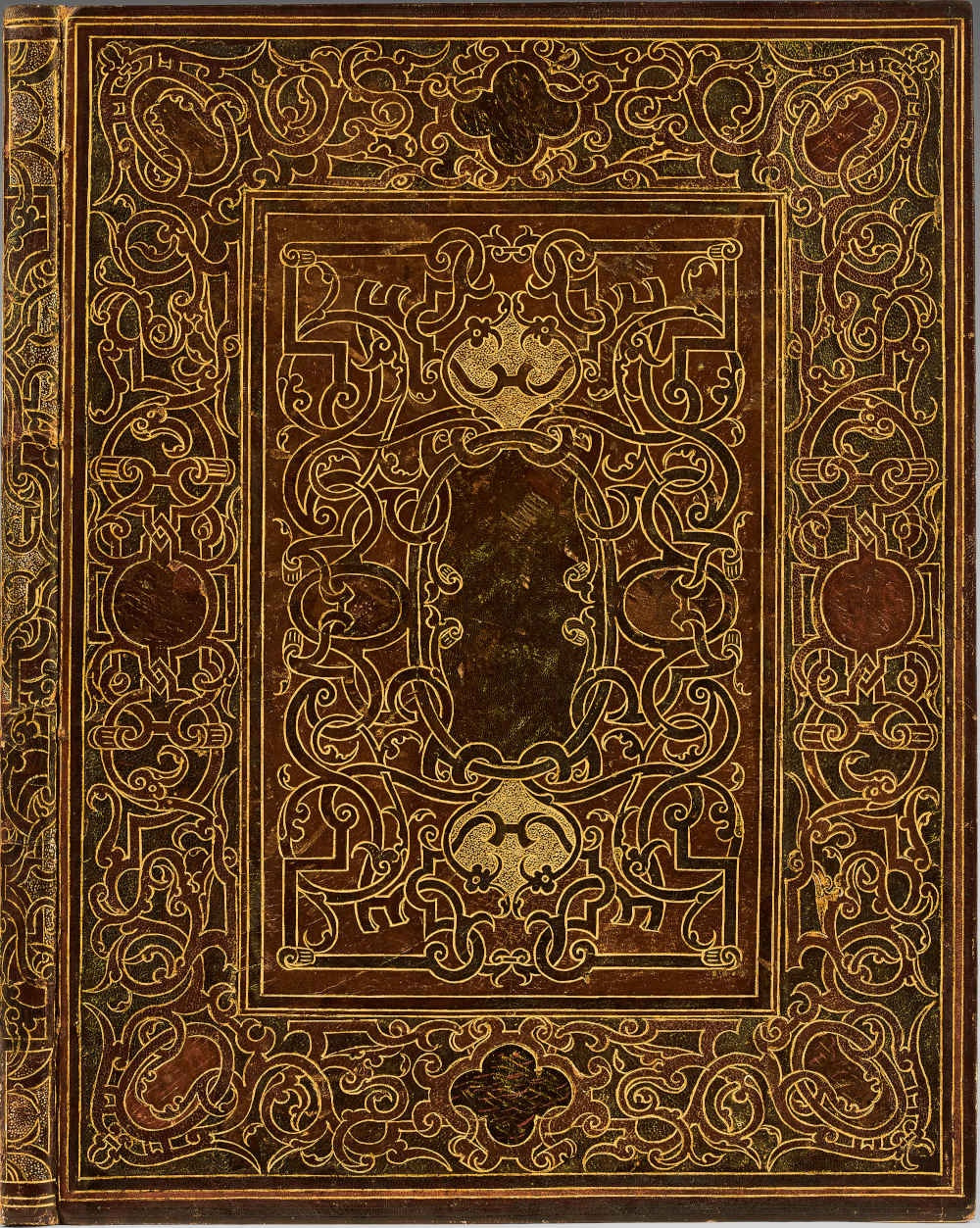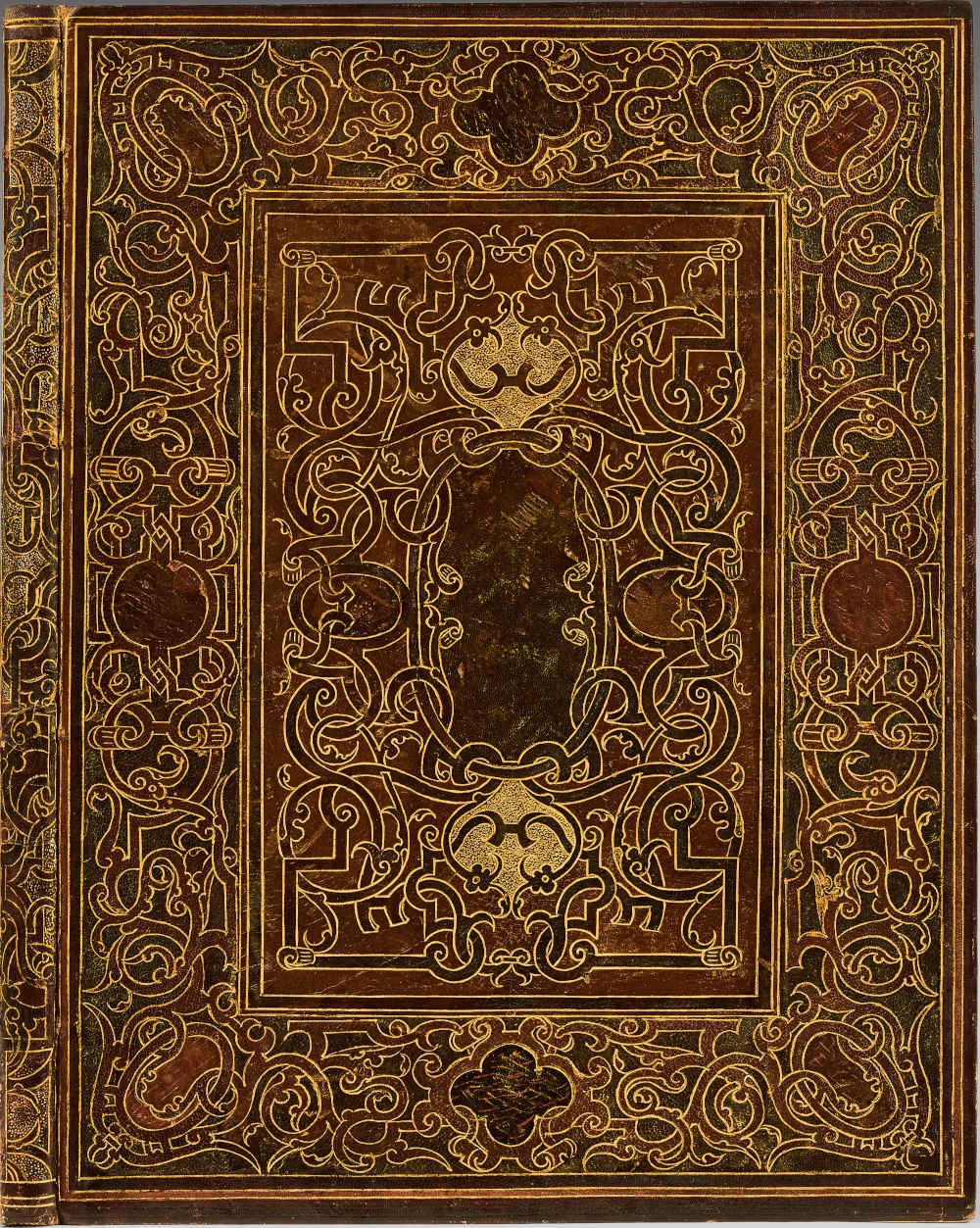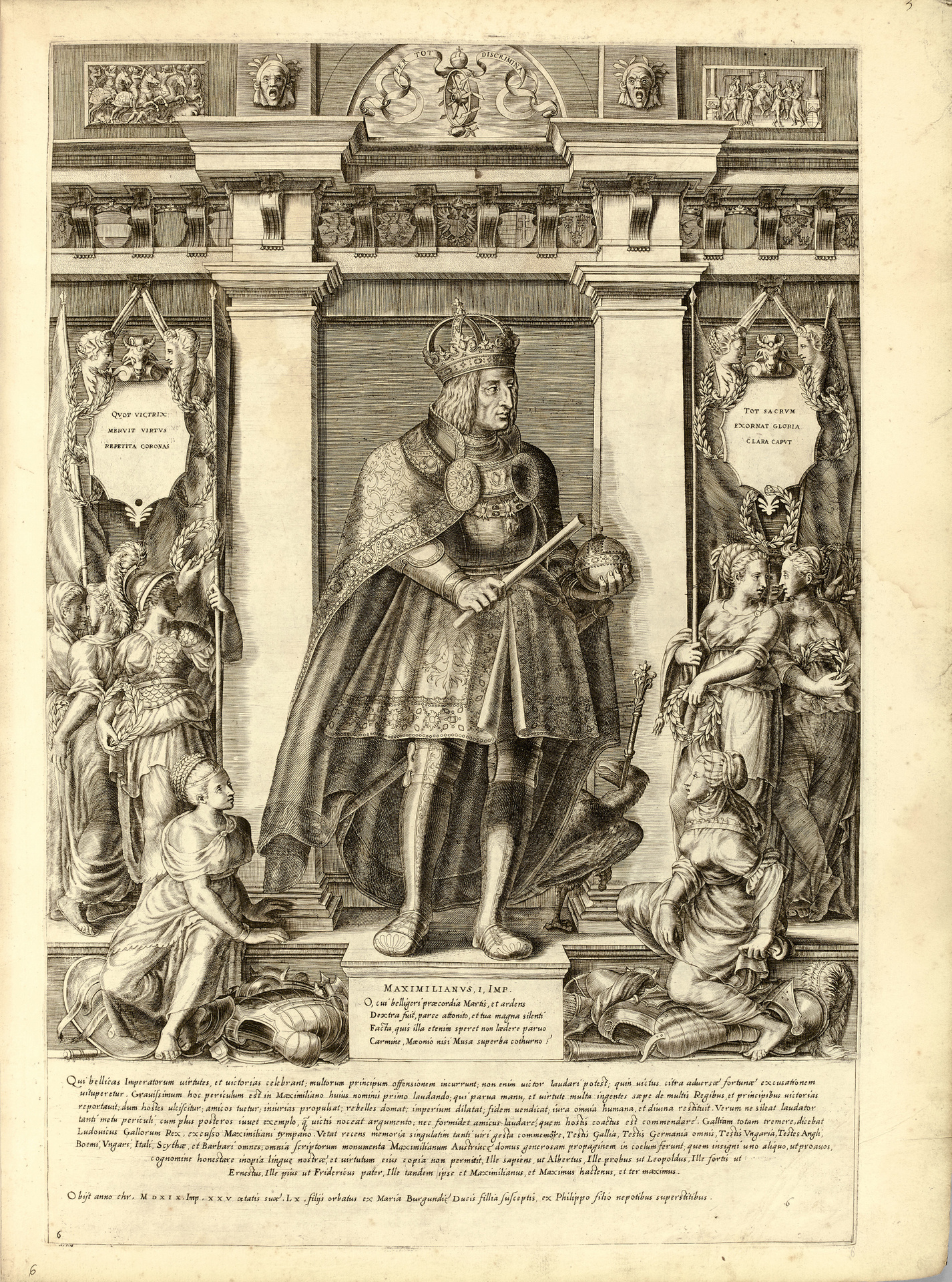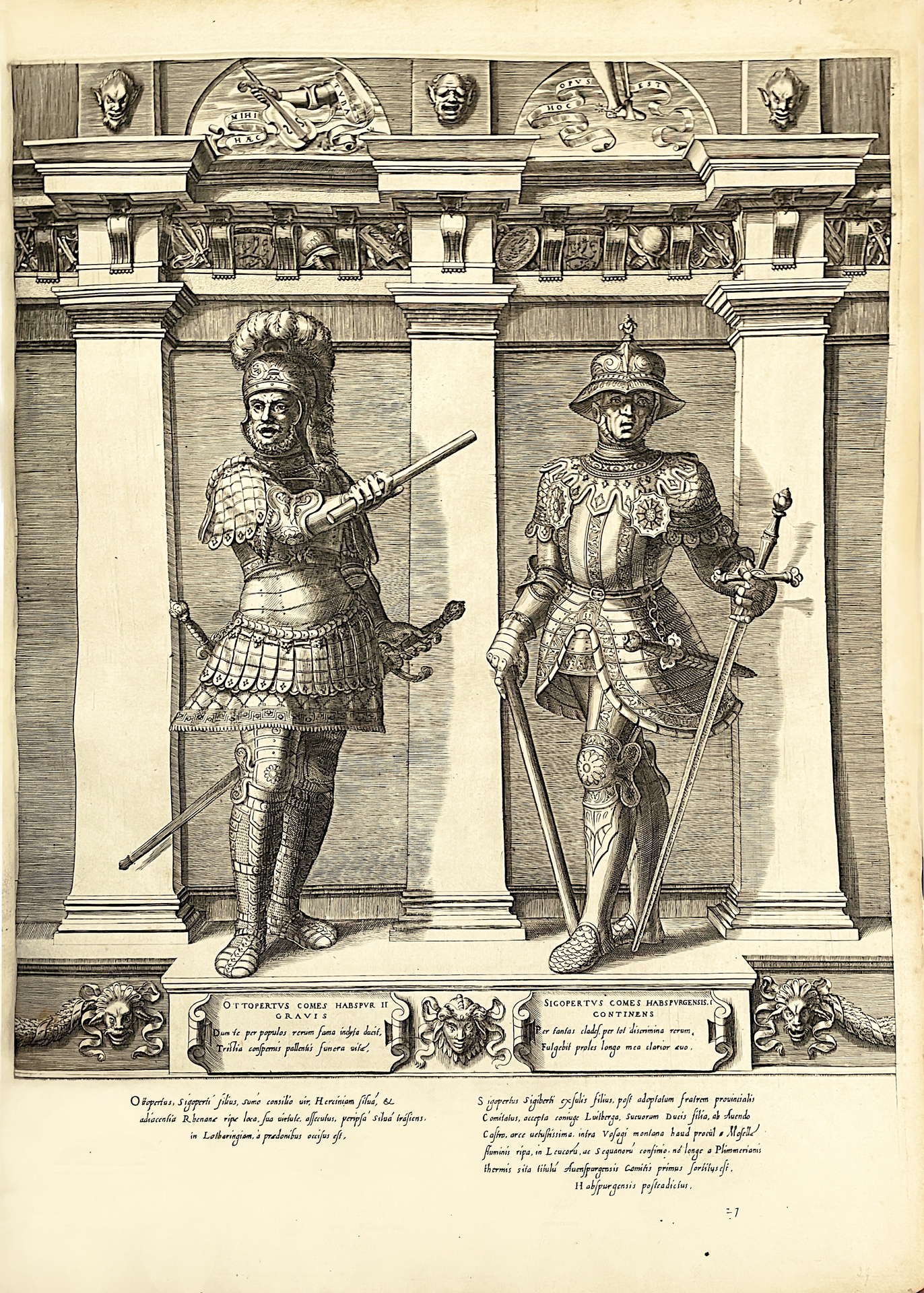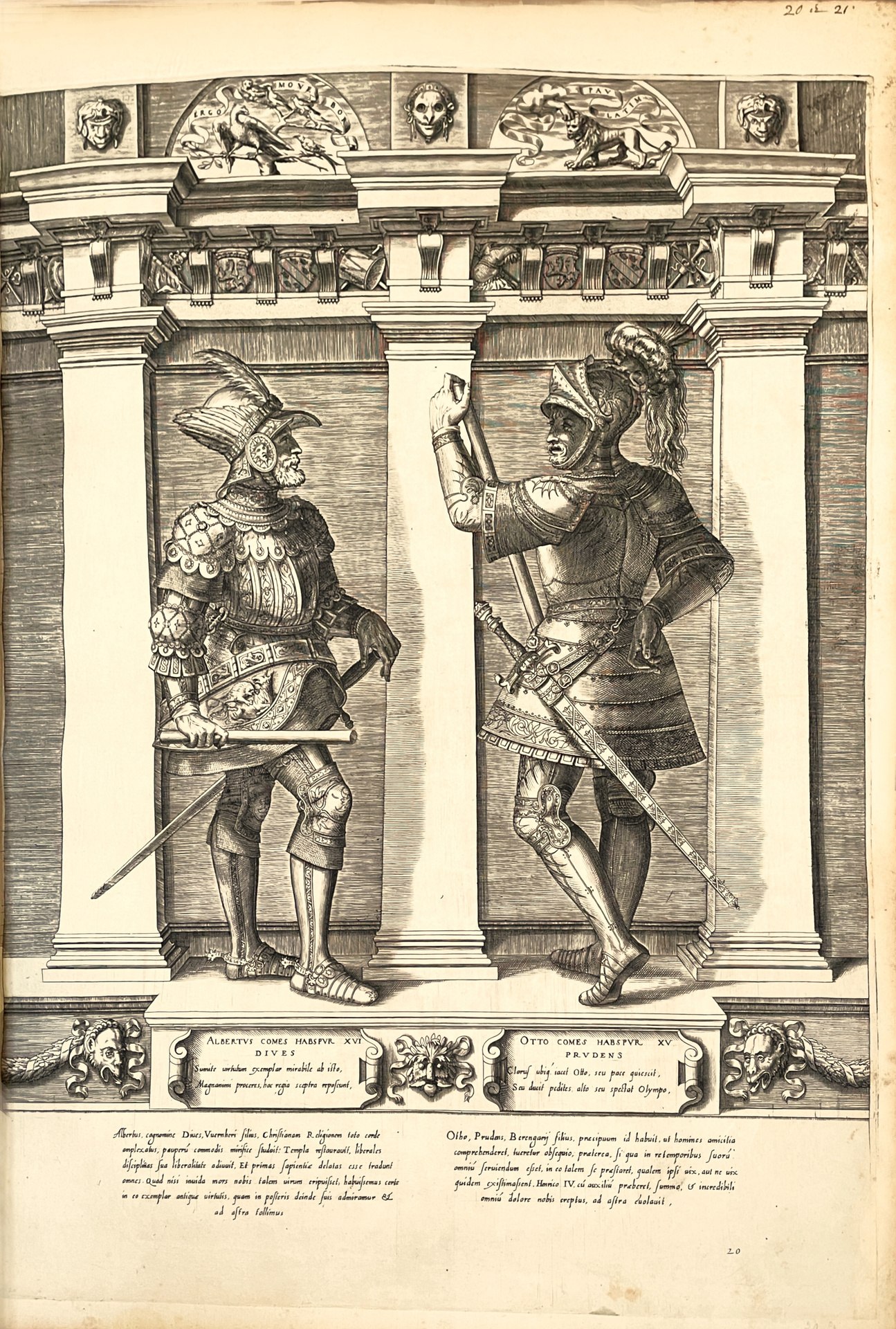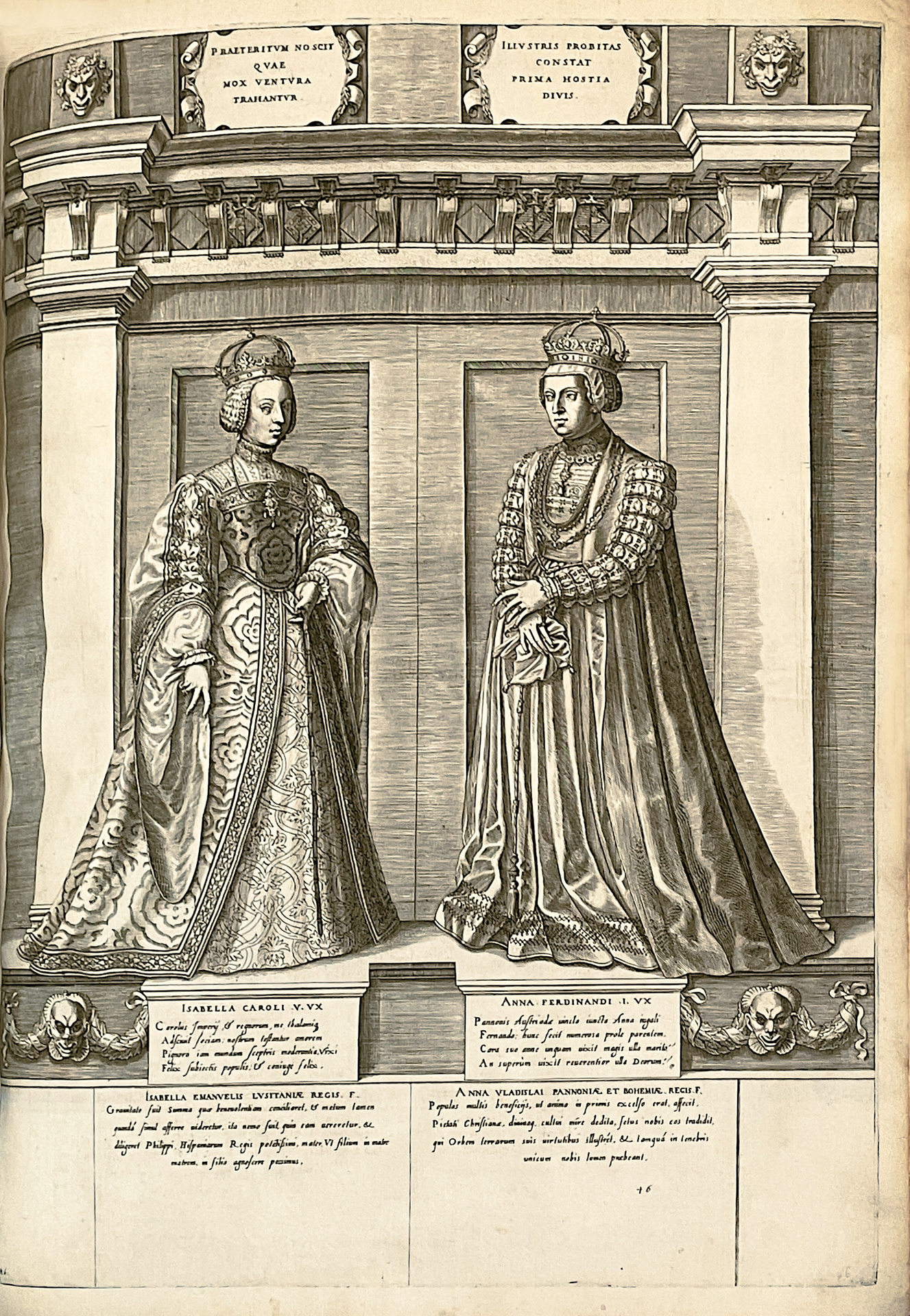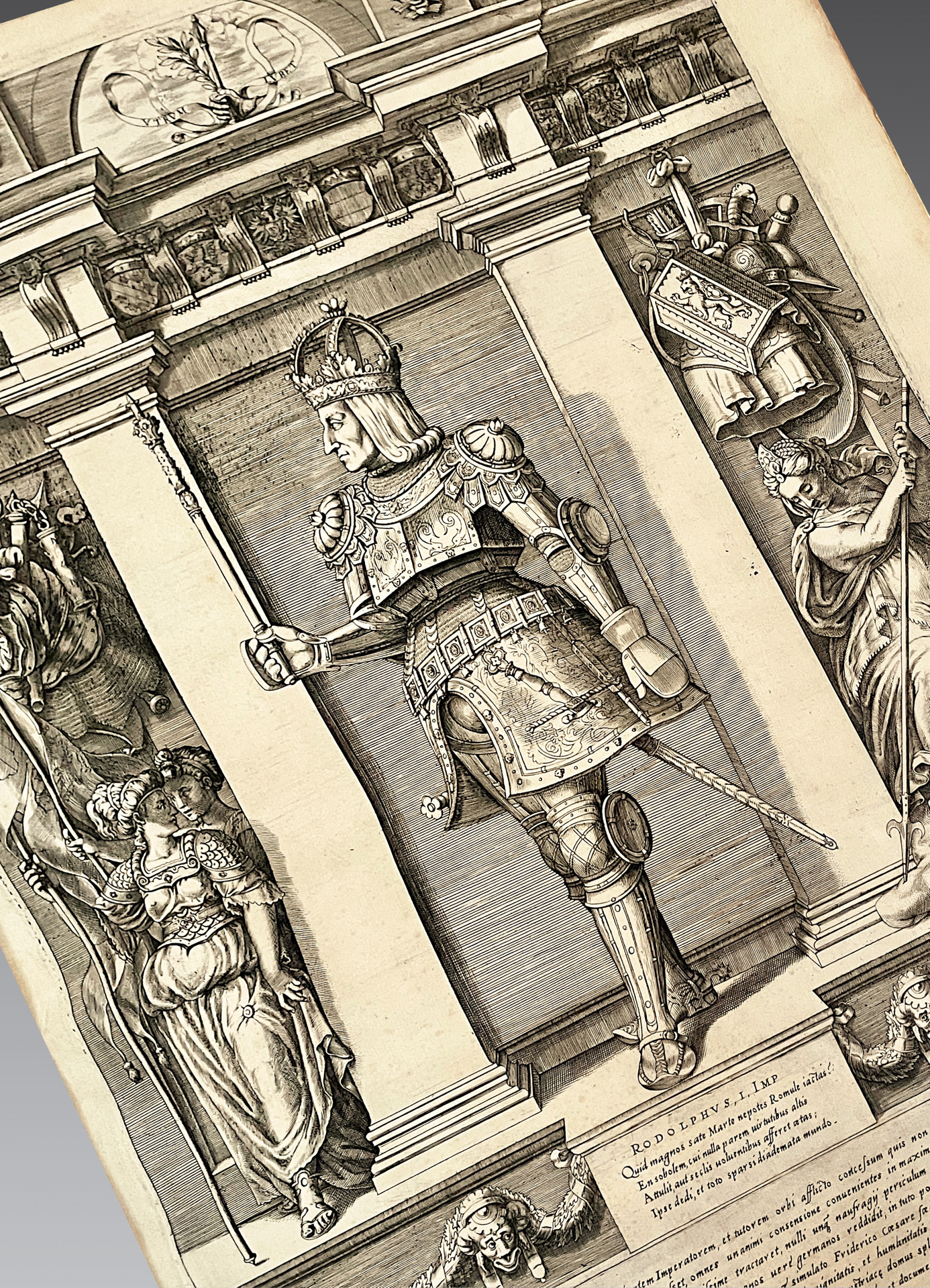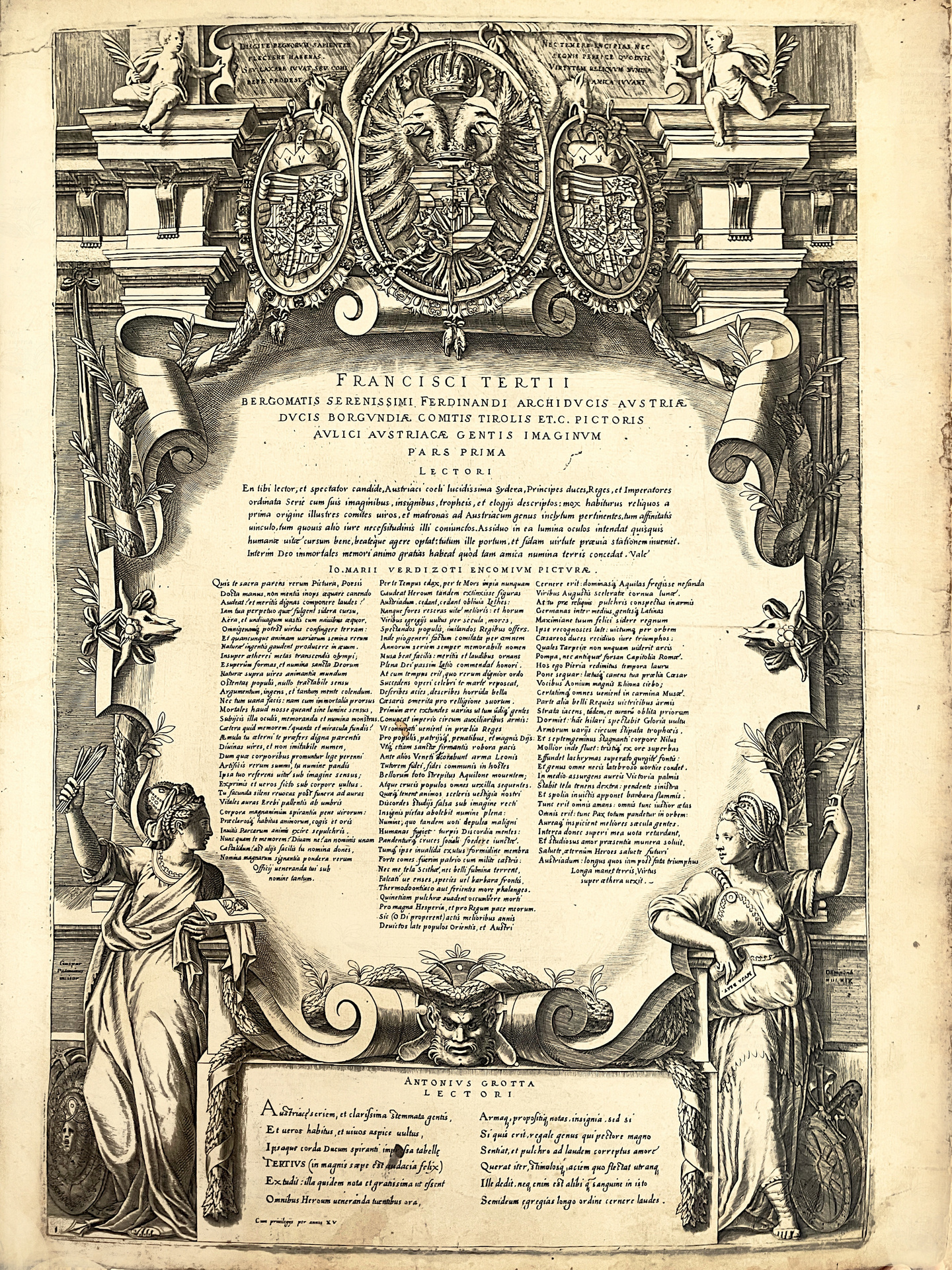Oeniponti [Innsbruck], 1569.
Plano of (57) ll. including 5 titles and 52 full-page portraits. Waterstain and a few stains or foxing, repaired tear on the title, default on the margin’s corner of 4 pl.
Brown and black morocco over wooden boards, elaborated decor rich with scrolls and interlacings of red morocco underlined with gilt fillets, patterns on the center decorated with thousand gilt points; sixteen decors on the corners and central and lateral ends with a mosaic of black morocco enhanced with fine curved lines painted in red and yellow, external border of twenty millimeters repaired, rebounded back decorated with a similarly contemporary décor with a mosaic of red and black morocco, scrolls and interlacings underlined with gilt fillet, décor with gilt dotting, renewed endpapers.
Exceptional Parisian binding made towards the year 1569 close to the bindings executed by Marcus Fugger (1529-1597) and especially from the binding n°26 of the “Sixteenth-century Gold-Tooled Bookbindings in the Pierpont Morgan Library by Nixon – New York 1971”, but with a rare dimension: 567 x 422 mm.
Second implemented edition, of the utmost rarity, of this sumptuous suite of full-length portraits of European sovereigns.
The edition includes 5 titles decorated with the arms of the Austrian house and 52 figures intaglio by Caspar Osello, known as Patavinus, presenting the full-length portraits of the sovereigns of Austria, Spain, France and Burgundy in architectural decors and with captions at the bottom. This suite is of the utmost interest from the history of costume point of view.
“Collection of 57 intaglio engravings, divided into 5 parts, namely: 1st part, 16 pl.; 2nd, 12 pl.; 3rd, 7 pl.; 4th, 6 pl., and 5th, 16 pl. These plates represent the emperors and great men of Austria, with a quatrain at the bottom of each portrait, an abbreviated biographical note, and emblematic figures. Besides the 1558 edition, which can be bought for a hundred francs or more, there are two quite distinct editions, under the dates 1569 to 1573; they have a few more plates than the first.” (Brunet, V, 728).
“Questo Gaspare Padou, è quello che altrimenti si denomin anche Gaspar ab avibus o Gasparo delle Oselle. Poco si sa di lui, se non che era nativo di Cittadella nel Padovano, trovandosi in una sua stampa della flagellazione Gaspar ab avibus Cittadellensis fecit. Cinquantadue tavole compongono questa Opera di bello intaglio, ove i ritratti in piedi dei personaggi hanno contorni figurati”. (Cicognara)
One of the main stimulation area for the art of Renaissance binding, of large and sustainable reach, is that of Jean Grolier’s library.
Around 1537, indeed, one can detect the apparition into his library of a series of preciously bound Aldine editions which constitute one of the great milestones in the history of French binding by inaugurating a prosperous period during which the ornementation of bindings, while retaining its specificity, closely supports the contemporary decorative movement.
These bindings, of a high quality execution, replace the punctual ornementation with tools and fillets framings of the Pellegrino style a completely different conception: the décor is basically constituted by interlacings that structure the rectangular surface of the covers. It is therefore, despite the presence of some tools pointing some determining points, line games, an essentially graphic project, a drawing work.
Another novation: the cover is made in morocco, a superb morocco, in dense colours, admirably receiving the gilt imprint. The use of this luxurious and colorful material will therefore be very successful. Associated with gilt and later with painting, it will upgrade the leather binding, and will render obsolete the bindings in fabric.
We attributed in all likelihood these first bindings with interlacings executed for Grolier to Claude de Picques who, twenty years later, will bear the title of Binder of the King. But, here again, the binder’s part does not seem decisive and it is necessary to recognize the intervention of an ornemanist from Bellifontan circles.
During the years 1540-1550, to the moroccos hues are added painted colours, of a great liveliness, highlighting the interlacings games and the shapes of “hollowed out” tools, especially engraved to encircle coloured shapes.
In the middle of the century, what we may call an art of binding has conquered this city and binding became an often obligatory extension of the possession of books and a sign of adhesion to a way of life and a new culture.
Quite a number of personalities thus choose to give a visible form to the attention they pay to building a library; just as authors and booksellers care for testifying in the same obvious way of the gesture they accomplish by offering their book to a protector. This social practice takes a large extension and takes on various aspects: quite “mundane” for Diane de Poitiers rather imitative for Catherine de’ Medici, seigneurial obligation for Anne de Montmorency or Cardinal Charles de Lorraine. More “lived”; more personal, seems to be the taste for binding expressed by amateurs of less restrictive social status like Sainte-Maure, Demonville Thomas Mahieu Secretary of Catherine de’ Medici, and especially among many foreign amateurs such as Marcus Fugger, P E de Mansfeld Governor of the Duchy of Luxembourg, the Englishman T. Wotton, the Flemish Mr. Lauweryn, etc. who, by addressing to Parisian workshops, allow us to measure the European reputation that they had acquired.
The largest Renaissance binding in decorated mosaic and painted morocco from the middle of the 16th century appeared on the market since nearly a century. “Raphaël Esmérian” owned a folio binding made towards 1555 for Marcus Fugger sold 200 000 FF (30 000 €) on June 6, 1972, 48 years ago, but it measured 310 mm height against 563 mm for this spectacular Renaissance masterpiece. A bibliophilie book was then traded from 10 €.
